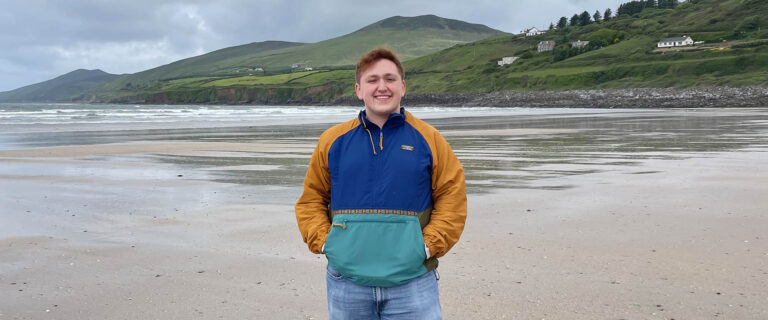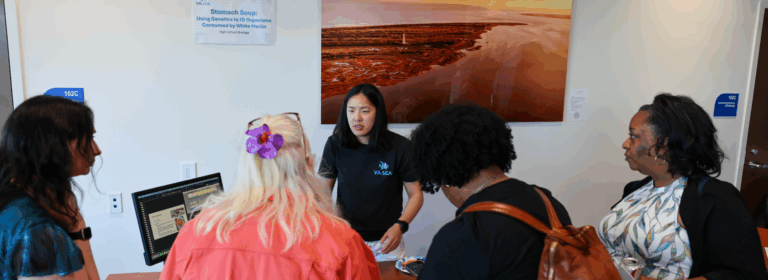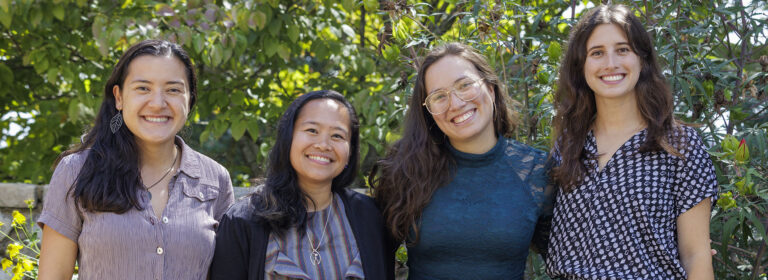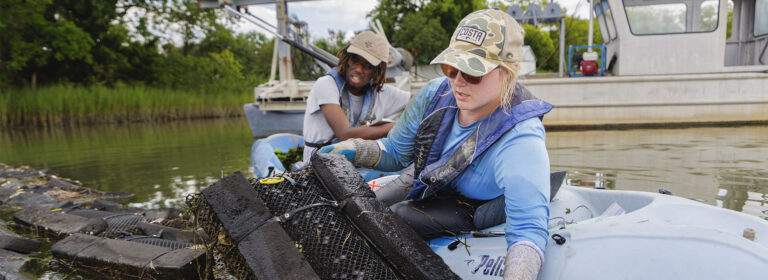Extension at Work: Engineering Seafood Safety—and Energy Savings
When Bob Lane picks up a can of pasteurized crabmeat at the grocery store, he can’t help but think about how it got there. After 27 years as a seafood engineer, he knows how much problem solving goes into getting fresh, pasteurized, and frozen seafood to supermarket shelves.
Lane helps Virginia companies provide safe, high-quality seafood products, while suggesting energy conservation measures that save money. His work means that other people don’t have to think twice before grabbing that can of crabmeat or bag of clams.
“When people buy seafood, they don’t want to know what’s happening behind the scenes. They just want something that’s safe and has the flavor they’re looking for,” says Lane, a Virginia Tech faculty member at the Virginia Seafood Agriculture Research and Extension Center affiliated with Virginia Sea Grant. “Having a hand in that process makes me feel like I have some sort of accomplishment.”
As a seafood engineer, Lane keeps up with the latest research on how cooking, heating, cooling, and freezing processes affect food safety. He also helps Virginia seafood companies ensure their products are safe for consumers.
“You have to play detective,” he says. “There are some best practices, but every project is different, so I develop food processing ‘recipes’ for different companies to follow.”
When one firm had difficulty maintaining the shelf life of its frozen clam product, for example, Lane went to the facility to investigate. He looked at the freezing profile—the temperature to which the clams were chilled versus the time they were kept frozen—and was able to solve the problem. Based on food temperature measurement and safety knowledge, Lane determined that the product wasn’t being brought to a low enough temperature. Based on his recommendations, the company prevented its product from spoiling prematurely. Being involved in getting seafood to shelves is one of Lane’s favorite parts of his job.
“I like seeing how seafood products change from the point where they start processing to where they get on the shelf,” Lane says. “It’s cool to see the different steps and not just the end result.”
“There are some best practices, but every project is different, so I develop food processing ‘recipes’ for different companies to follow,” Lane says.
Being involved in getting seafood to shelves is one of Lane’s favorite parts of his job.
In addition to food safety processing, Lane helps companies control energy costs by evaluating their use of energy and making suggestions for energy management. He worked with a Virginia fish farm, for example, to evaluate its energy use and aided it in winning a grant from the state to install alternative energy systems. By recommending a solar heating system and a groundwater cooling system, Lane helped the business to save money and resources—even as it was expanding its operation.
His past employment experience feeds well into this part of his job. After graduating with a bachelor’s degree in agricultural engineering from Virginia Tech in 1978, Lane worked for a power company doing energy audits and promoting energy conservation for large industrial customers. Some of the companies worked in food processing, producing products ranging from poultry to chocolate. Lane’s experience with these companies came to mind when he saw a job posting for his current position in The Daily Press in 1988.
According to the newspaper ad, Virginia Tech was seeking someone with an agricultural engineering degree. Armed with that exact degree, Lane applied for the position with his alma mater—and got it, aided by his engineering and energy management background.
When Lane first started with Virginia Tech, he took yearly training courses in food safety to stay informed. In 2007, he began pursuing an advanced degree in agricultural and life sciences at Virginia Tech with an emphasis on food safety. He earned a master’s degree in 2011.
“It was important for me to continue my education so I could maintain my knowledge and continue to specialize in food safety areas,” Lane says.
In almost three decades of working with seafood and studying food safety, Lane has seen many industry changes. But one thing hasn’t changed.
“After all these years, I still love eating seafood,” Lane says.
Photos by Jenn Armstrong.
Story by Katharine Sucher, Student Correspondent.
Published in the “Extension At Work” series in 2015.
“I like seeing how seafood products change from the point where they start processing to where they get on the shelf,” Lane says.





